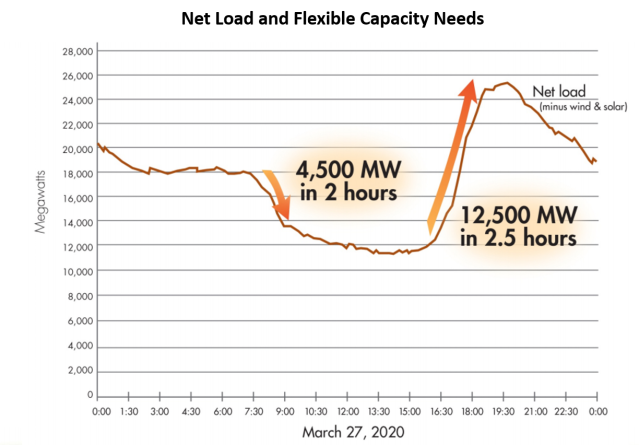by Bob Shively, Enerdynamics President and Lead Facilitator
Tucson Electric Power (TEP) recently announced a Power Purchase Agreement (PPA)  from NextEra Energy Resources for a 100 MW solar project combined with a 30 MW/120 MWh battery storage system. The all-in price is reportedly less than $45/MWh. Why is this news? Because TEP can purchase solar power, store it, and shift it to the system peak at significantly less than the cost of running a gas peaker. This begs the question: Are solar/battery combinations poised to displace gas peakers as a resource for meeting system peak demands? Below are some key discussion points that may help answer this question.
from NextEra Energy Resources for a 100 MW solar project combined with a 30 MW/120 MWh battery storage system. The all-in price is reportedly less than $45/MWh. Why is this news? Because TEP can purchase solar power, store it, and shift it to the system peak at significantly less than the cost of running a gas peaker. This begs the question: Are solar/battery combinations poised to displace gas peakers as a resource for meeting system peak demands? Below are some key discussion points that may help answer this question.
- Solar PV prices have fallen dramatically
Recent price reductions on PV solar power have been nothing short of phenomenal and are expected to continue. Costs for utility-scale solar PV have dropped by 85% since 2009 according to the widely used Lazard Levelized Cost of Energy studies. And according to Bloomberg New Energy Finance New Energy Outlook 2017, costs are set to drop another 66% by 2040.
Source: Levelized Cost of Energy Analysis 10.0, Lazard.com
- Solar costs are now competitive with traditional generation sources
What was recently considered an expensive fringe technology is now among the cheapest sources of new power supply:

Source: Levelized Cost of Energy Analysis 10.0, Lazard.com
- Solar is cheap, but what about serving peak loads?
The main issue with solar power is that it reaches its maximum in the middle of the day, which does not correspond to the system peak:

source: California ISO presentations
Currently system operators tend to compensate by using gas combined-cycle or gas peaking generation to ramp quickly and pick up the system load in the late afternoon and evening.
Now that solar power is economic, the possibility that net load curve shapes (net load curves are the remaining amount of demand served by traditional generation sources after renewable power has been taken into account) will change quickly and dramatically may result in a generation system that is not suited to grid requirements. The State of Arizona has even considered creating a Clean Peak Power portfolio requirement to ensure that growing solar power must address the peak issue, although the proceeding is currently suspended. This concept would result in different levels of renewable energy, with renewable energy that could be delivered on-peak being more valuable than traditional renewable energy.
- Can storage step in to fix the problem?
Until recently, electric storage has been considered too expensive to help much with solar power’s timing issues. But battery costs, especially for lithium-ion batteries, have dropped at a rate similar to that of recent PV costs. With TEP’s announcement of a PPA for $45/MWh that includes battery storage, it appears that at least in the ideal conditions of Arizona and with current tax credits, batteries can become a mainstream technology solution[1]. If more projects can be built at costs similar to TEP’s deal we may soon be discussing not only the demise of coal but a coming demise in gas generation as well.
Footnotes:
[1] For an explanation of how it may be possible for the low PPA price to work, and also for what the price might be without subsidies, see Utility Dive, How Can Tucson Electric Get Storage + Solar for 45¢/kWh?
